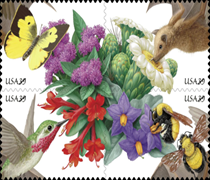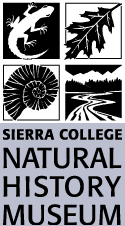California Dogface Butterfly
Deren J. Ross
Naturalist
A State Butterfly (later to become the State Insect) for California was first proposed in 1929 when members of the Lorquin Entomological Society sought to recognize the scientific importance of entomology to society. Entomologists from throughout the state voted, by ballot, on three well-known butterflies occurring in California. The three candidates were: the Lorquin’s Admiral, the California Sister and the California Dog Head, also known as the California Dogface or Flying Pansy. The result of the ballots were: 77 California Dog Head, 11 California Sister, and 0 Lorquin’s Admiral (Gunder 1929). “A major factor for this decision was the fact that the California Dogface was the only one of the three candidates limited solely to California in distribution” (B. Cavanaugh 2011).
However, while early entomologists were successful in designating a state butterfly or insect, a first in the United States, California still did not have an “official” state insect, which must be approved by the State Assembly and signed by the Governor. It wasn’t until the 1970s, when teachers and fourth grade students of Dailey Elementary in Fresno helped establish an “official” state insect by writing to Assemblyman Kenneth Maddy. After considerable effort, Assemblyman Maddy introduced a bill that was finally approved and signed into law by Governor Ronald Reagan on July 28, 1972.
The Butterfly As Art
The proposed (1929) design for an official Entomological State Emblem or Seal was never officially adopted but, over the years, similar forms of recognition were presented. The California State Bureau of Entomology (Sacramento, CA) used the California Dogface Butterfly for the logo on their research bulletin entitled “Occasional Papers” and a more recent effort to honor the State Insect was produced by Fran Keller, Greg Kareofelas, and the Bohart Museum of Entomology at UC Davis. The following graphics display the first proposed design for an official Entomological State Seal, the Bureau of Entomology’s Bulletin logo, and the UC Davis Bohart Museum of Entomology poster honoring the California State Insect.



L. to R. (1929), (1958), (2007)
The dogface was also recognized in the 1977 U.S. Postage Butterflies Stamp, the 2007 U.S. Postal Biodiversity Stamp and, if you look closely, you’ll see find it on your current California driver’s license.


Life History
The California Dogface Butterfly (Zerene eurydice) is a rarely observed jewel of California fauna. It’s distribution ranges from the Central Sierra Nevada foothills, to relic populations in the Sacramento Valley, to the Coast Range from Mendocino to the mountains of Southern California. To find it requires persistence and a familiarity with the distribution of the butterfly’s larval host plant—California False Indigo (Amorpha californica).
In the Central Sierra foothills, the host plant is an uncommon and aromatic shrub that grows up to 7 feet tall and has purple spike-shaped flowers that bloom in May and June. The plant grows in local river canyons between 500 and 2000 feet elevation, usually along seasonal stream channels within rocky side-canyons. Scattered widely and rarely plentiful, it is most often associated with Poison Oak, Ponderosa Pine, Foothill Pine, Black Oak, Interior Live Oak, Blue Oak, Canyon Oak, White-leaf Manzanita, and a variety of foothill wildflowers that include Coyote Mint, California Brodiaea, Humboldt Lily, and various thistle species (Ross, 2008).
Prior to leaf budding in late March to early April, the first of season butterflies will emerge and begin laying their first eggs, the first of two possible seasonal broods. A complete metamorphosis from egg, to larva, then chrysalis or pupa, and finally into an adult butterfly takes approximately 30 to 33 days.
“ We delight in the beauty of the butterfly, but rarely admit the changes it has gone through to achieve that beauty. ~Author Unknown
Differences Between Males and Females
The male and female butterflies are morphologically different. Males are slightly smaller with yellow-orange hindwings and distinguished by “the splendid purplish iridescence of the forewings” (Holland 1898), which outlines the appearance of a poodle or dog head. The slightly larger females are light yellow and can be easily mistaken for the similar Cloudless Sulphur.
In the Sierra foothills, the fast moving California Dogface Butterflies “begin flying in March, well before the host plant has leafed out” (Shapiro 2007), and continue to fly until early September. The peak flight season, from mid May to mid June, is the best time to look for the butterfly while it seeks out its favorite nectaring sources…blue and purple wildflowers. “Typically, the dogface flies well above the ground and quickly swoops down to visit a flower and does not spend much time in one location” (B. Cavanaugh).
Exactly how this butterfly over-winters remains a mystery and one that still needs a definitive answer if we’re going to fully understand the life history of this butterfly. Current information suggests that the adult dogface butterfly hibernates in winter; however, recent studies offer another possibility, that of over-wintering as a chrysalis or pupae. In a March 2008 study, several first of season adults were netted and examined. All were found to be in excellent for fresh condition (Ross 2008).
Conservation
“The butterflies existence can become threatened by extensive forest fires and loss of habitat due to land conversion. The butterfly population can be encouraged if people include the host plant as part of their landscape” (B. Cavanaugh). Locally, the Placer Land Trust has been instrumental in protecting potential habitat for the California Dogface Butterfly.
Learn More
 For young students and teachers interested in learning more about the story of the California Dogface Butterfly, I recommend the book “The Story of the Dogface Butterfly” by Fran Keller and Laine Bauer. It’s available from the Bohart Museum of Entomology at UC Davis.
For young students and teachers interested in learning more about the story of the California Dogface Butterfly, I recommend the book “The Story of the Dogface Butterfly” by Fran Keller and Laine Bauer. It’s available from the Bohart Museum of Entomology at UC Davis.
Literature and Sources Cited
- Cavanaugh, B. 2011. California Dogface Butterfly. Unpublished information.
- Gunder, J.D. 1929. A State Butterfly. The Pan-Pacific Entomologist vol vi, no. 2. Pasadena, California.
- Holland, W.J. 1898. The Butterfly Book. Doubleday and Company, Inc. Garden City, New York.
- Keller, F., and L. Bauer. 2013. The Story of the Dogface Butterfly. Bohart Museum of Entomology. Davis, California.
- Ross, D. J. 2008-2012. A Natural History Study of the California Dogface Butterfly in the Central Sierra Nevada Foothills. Unpublished. Placer Land Trust, Auburn, California.
- Shapiro, A. M. and T.D. Manolis. 2007. Field Guide to Butterflies of the San Francisco and Sacramento Valley Regions. University of California Press, Berkeley, Los Angeles, and London.
